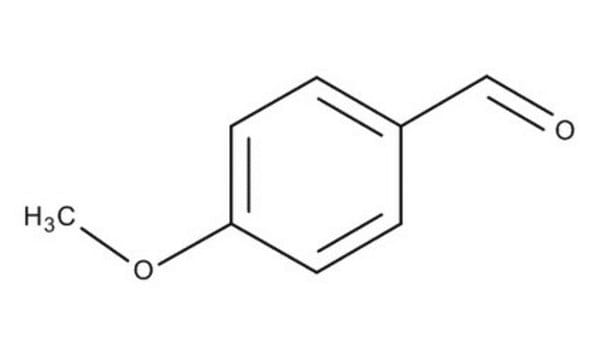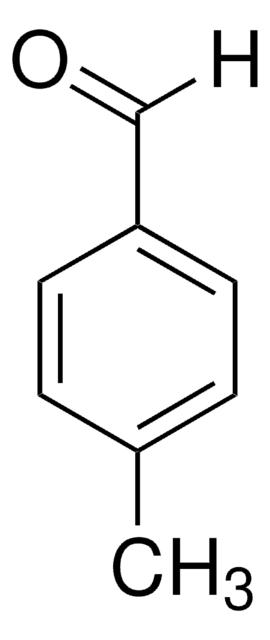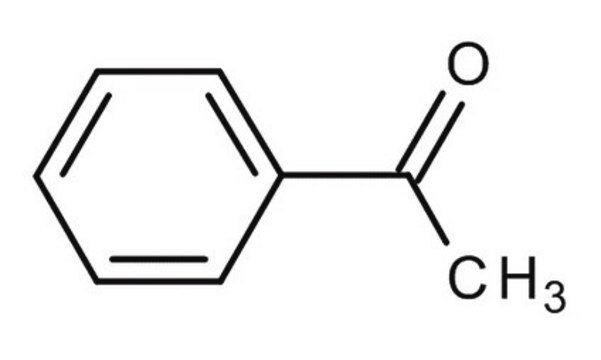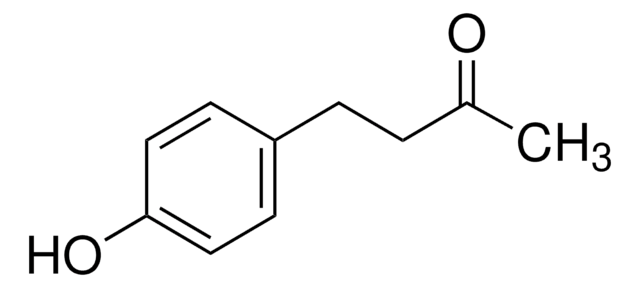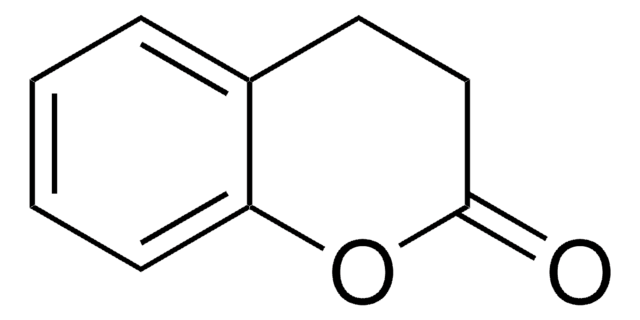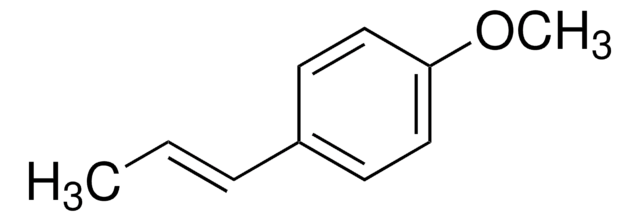W267007
p-Anisaldehyde
≥97.5%, FCC, FG
Synonym(s):
4-Methoxybenzaldehyde, Aubépine
About This Item
Fragrance grade
Halal
Kosher
meets purity specifications of JECFA
Recommended Products
biological source
synthetic
grade
FG
Fragrance grade
Halal
Kosher
agency
follows IFRA guidelines
meets purity specifications of JECFA
reg. compliance
EU Regulation 1223/2009
EU Regulation 1334/2008 & 872/2012
FCC
FDA 21 CFR 172.515
vapor density
4.7 (vs air)
assay
≥97.5%
form
liquid
composition
contains IFRA restricted p-Anisaldehyde
refractive index
n20/D 1.573 (lit.)
bp
248 °C (lit.)
Looking for similar products? Visit Product Comparison Guide
Related Categories
Application
- Aryl-alcohol oxidase involved in lignin degradation: a mechanistic study based on steady and pre-steady state kinetics and primary and solvent isotope effects with two alcohol substrates.: The study focuses on the mechanistic understanding of aryl-alcohol oxidase in lignin degradation, utilizing p-Anisaldehyde as a model substrate to investigate enzyme kinetics and isotope effects. (Ferreira et al., 2009).
Biochem/physiol Actions
Other Notes
signalword
Warning
hcodes
Hazard Classifications
Aquatic Chronic 3 - Repr. 2
Storage Class
10 - Combustible liquids
wgk_germany
WGK 1
flash_point_f
240.8 °F - closed cup
flash_point_c
116 °C - closed cup
Choose from one of the most recent versions:
Already Own This Product?
Find documentation for the products that you have recently purchased in the Document Library.
Customers Also Viewed
Our team of scientists has experience in all areas of research including Life Science, Material Science, Chemical Synthesis, Chromatography, Analytical and many others.
Contact Technical Service

